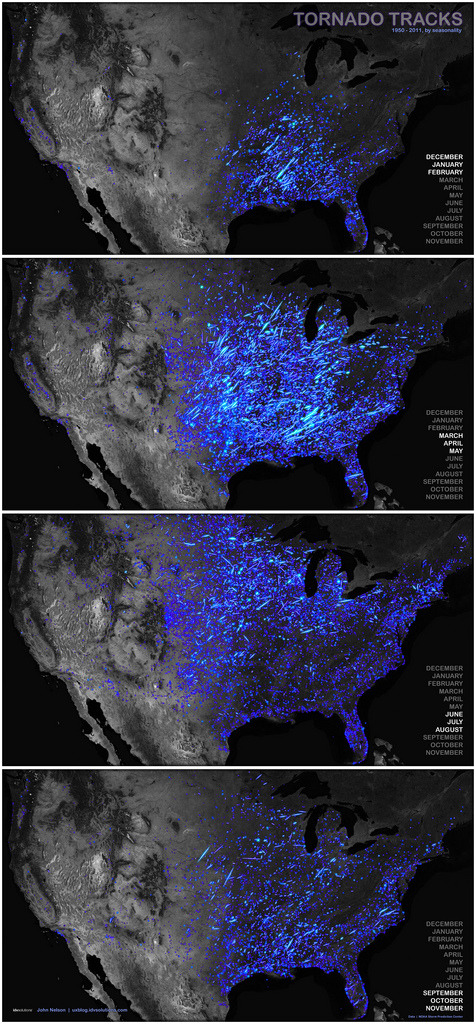
For this map shows the course of every single tornado that has hit the U.S. over the last six decades, and as you can see, few places on the East side of the continent have escaped the path of the deadly winds.
The neon-coloured map was created as a side-project by mapping manager John Nelson, in a case of taking his work home with him, as he works for data-visualisation software maker IDV Solutions.
The neon paths indicate the path of each tornado, and brighter strokes indicate more violent storms, according to the Fujita Scale.
The Fujita Scale, or F-Scale, measures tornadoes based mainly on the amount of damage they cause to buildings and vegetation.
The map, which uses U.S. Government data of where tornadoes 'touched down' between 1950 and 2011, has spread around the world in the last few weeks.
John told the website Our Amazing Planet: 'It caught on, and I've been very surprised and happy with the response.
'I just connected those lines to get a general path the tornado took.'
He added: 'When you view it at the national scale, right away you've got these kind of claw marks.
'Right away, I got a sense of hotspots, and areas that were unexpectedly devoid of tornadoes.'
Fuelled by the success of this map, the creator is looking to bring out a new, interactive version, which will include 2012's data and alllow you to filter the map by strength, year, location, seasons and other factors.
John added: 'We're very excited, and we'll post that soon. The general public can visit that and start asking whatever questions they like.'
For more versions of the map, or to see a higher-resolution version, visit the IDV blog.





Reader Comments
to our Newsletter